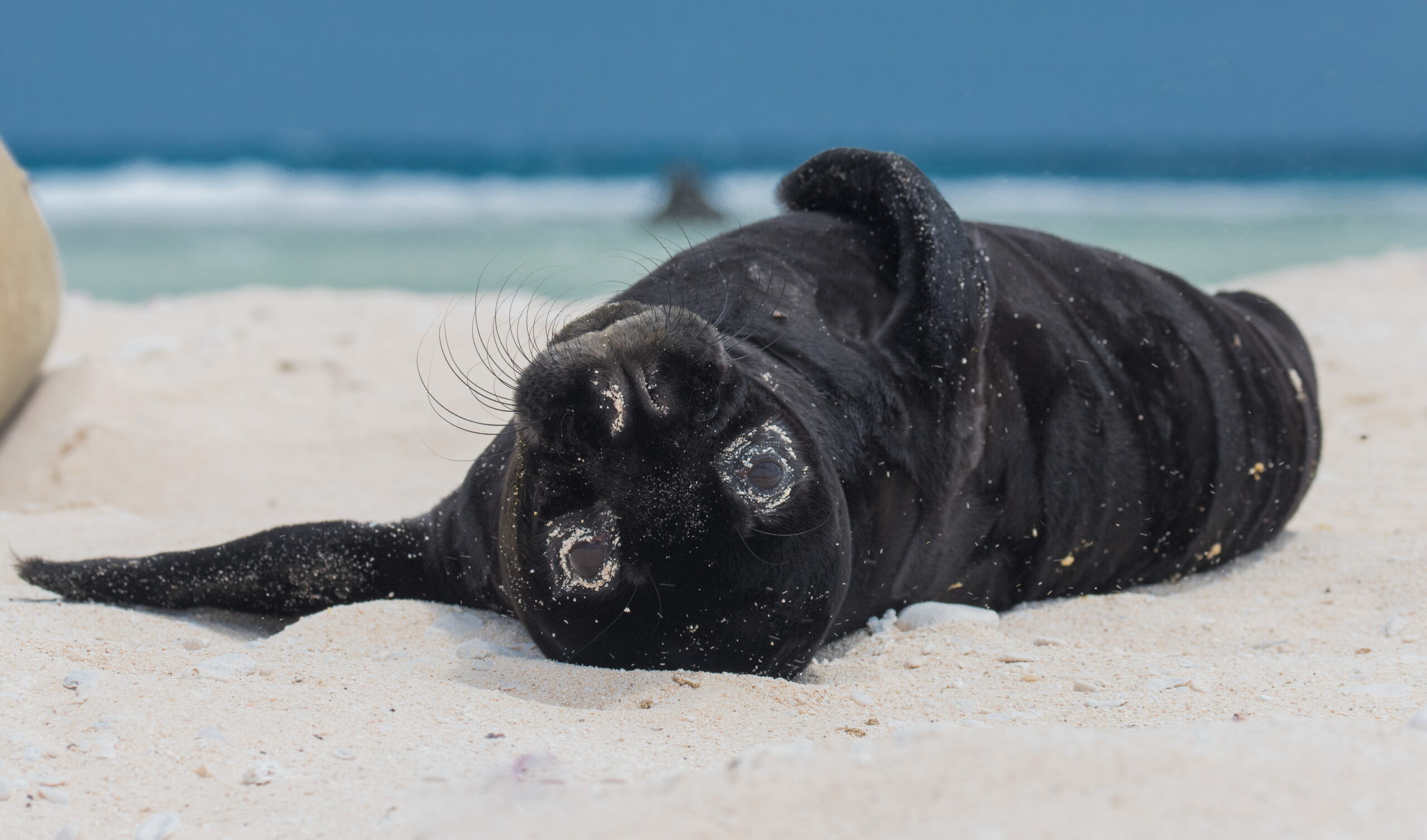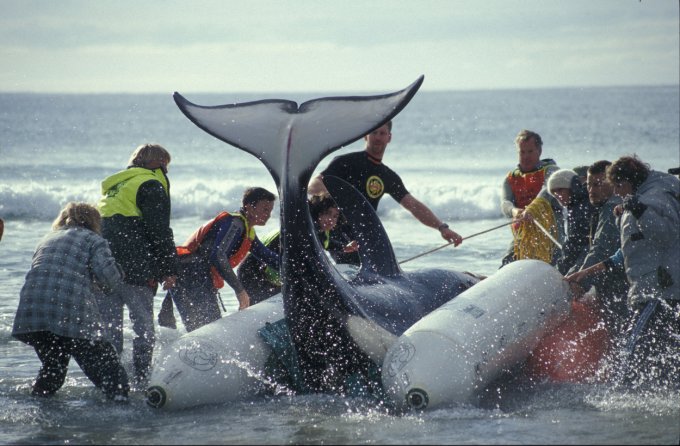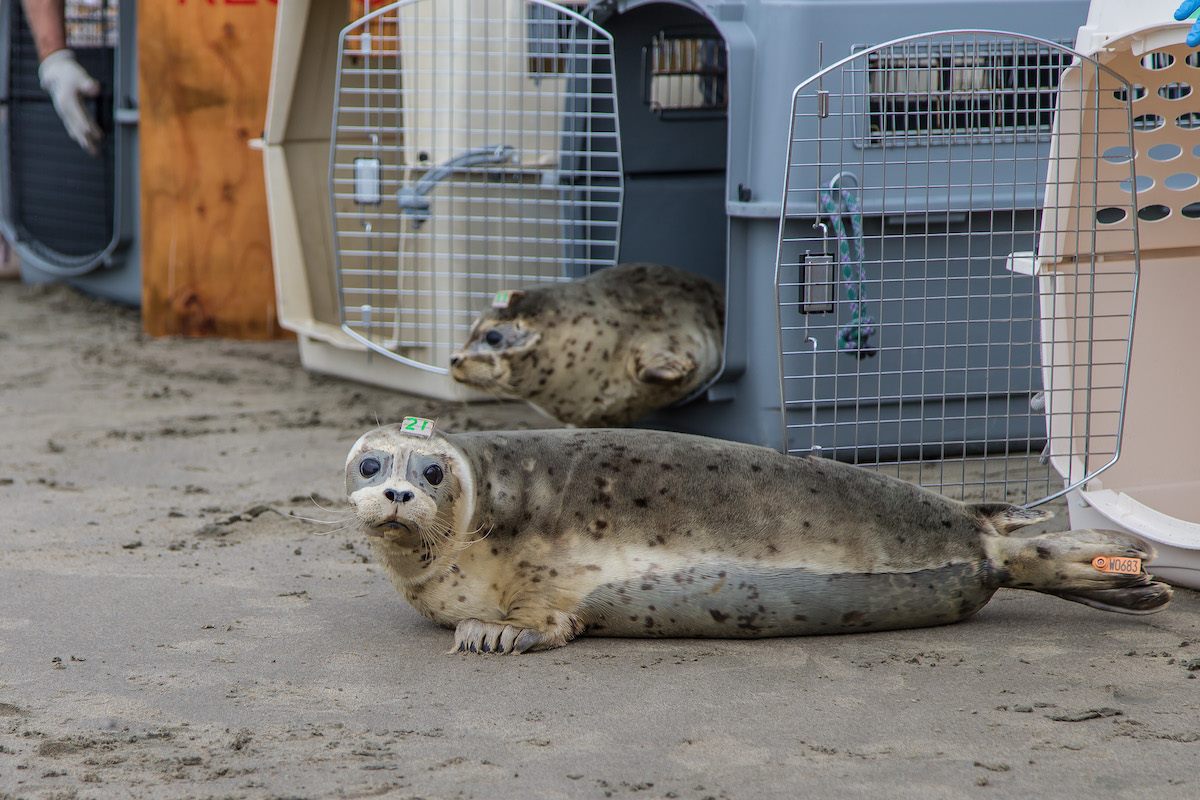A Guide to Responding to Stranded and Injured Marine Animals
Armed with the knowledge to handle and report a situation safely and quickly, you can play a role in ensuring that any coastal wildlife you encounter get their best shot at survival

It’s not a moment everyone experiences, but it’s certainly one that no one ever forgets.
Picture it: you’re walking along a boardwalk or going for a jog on the shoreline, when suddenly you see something in the distance. Whether it be a stranded whale or an entangled sea turtle, spotting a stranded or struggling marine animal tugs at the heartstrings unequivocally, and calls us to move quickly in order to save the creature’s life.
While our actions are certainly altruistic in the majority, jumping in too soon without following designated safety precautions in a situation like this could mean the difference between the animal’s life and death. Trying to move, rescue or assist the animal yourself without the proper knowledge of best practices held by most seasoned rescue professionals could be harmful to both the animal at stake as well as a threat to your own health and wellbeing.
Still, you may be thinking, “So…what do I do? Just leave it there? I want the animal to be saved, and I’m afraid it’s running out of time!”
Fret not! By following the recommendations below, you can arm yourself with the knowledge and preparatory information needed to handle these high-pressure, emergency situations if and when you ever encounter one, giving the animal its absolute best shot at a healthy, safe and happy return home to the sea.
Stop and Observe
Check your surroundings. Are there other marine wildlife of a similar species around? While it may be easy to jump the conclusion that an animal is stranded or injured, many species—particularly seals and sea lions—are known to “haul out” on shore to rest, and may not be hurt at all. Remain at least 50 yards away from the scene, or about the equivalent of half a football field. Getting too close could be both dangerous and distressing for the animal at stake.
Call

“Numerous organizations around the country are trained and ready to respond,” their resource says. Additionally, you can also use NOAA’s Dolphin and Whale 911 app to report stranded marine mammal sightings (it’s available for both iOS and Android devices).
Inform
When you speak to responders on the hotline for your area, be prepared to describe both your location and distinct characteristics of the animal you’ve encountered. Explain where specifically you are, and be ready to wait for the response team to arrive, if possible. The more accurate their targeted location is when they come to the scene, the faster they’ll arrive and the more likely they are to save the animal in need. Take advantage of any GPS-sharing capabilities on your mobile device—the response team (and the animal) will appreciate it!
Describe
Do you know what species you’re observing? Note its color and size, as well as any distinct markings or tags it may have. What’s its behavior like? Is it struggling or wounded? Fully lay out the details of what you see for the responders. If you can, take photos (from a safe distance) and provide them to the responders. This will enable them to best determine if any species-specific rescue gear (like trucks, hoists, etc.) will be needed in order to accommodate the animal they’ll be working with.
Listen and Respond
Listen carefully to any instructions the professionals may give you. In most situations, it’s likely that you’ll be asked to stay where you are, wait for the team and refrain from approaching the animal, while ensuring other people and animals don’t get too close, either. In rare circumstances, they may ask you to assist with small tasks that don’t involve touching the animal, such as draping dry seaweed over a cold-stunned sea turtle to keep it from getting any colder or draping wet clothes or towels over a whale, shark or dolphin in order to keep it wet until help arrives. In most cases, you’ll be asked to simply keep a guarding and watchful eye on the animal, but what’s most important is that you follow the instructions provided by the responders.
Educate
When it comes to giving stranded or injured animals their greatest chance of survival, the best thing we can do is educate and inform others on what to do when a situation like this arises. Share this article with friends and family so that they can be prepared too, because it’s often these events are encountered at the most unpredictable and unexpected times…and also when these animals need immediate, quality, professional care the most.
If we’re all prepared with steps to take and the resources to contact and use, we can all work together to give distressed marine life their the absolute best chance of recovery, without sacrificing their health, well-being or ability to thrive upon returning home to our ocean.
